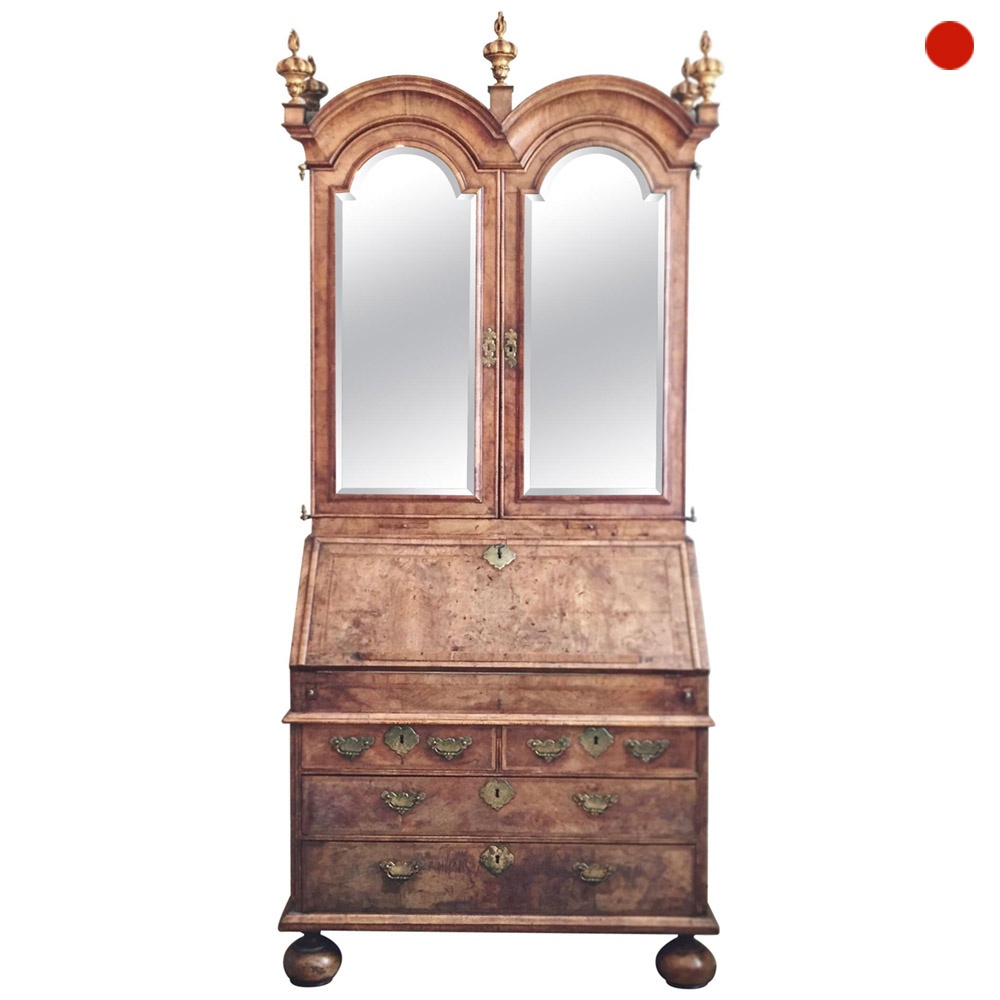Queen Anne Fully Fitted Figured-Walnut Double Dome Bureau Bookcase
1702 to 1714 England
SOLD
Request Information
Follow Us
Queen Anne Fully Fitted Figured-Walnut Double Dome Bureau Bookcase
A Queen Anne Fully Fitted Figured-Walnut Double Dome Bureau Bookcase, Circa 1710
The moulded ‘double domed’ pediment above a pair of mirror panelled doors, opens to a fully fitted divided interior incorporating small feather-banded figured walnut drawers, adjustable shelves and pigeon holes. Similarly, the bureau fall opens to a shaped fitted interior of small drawers, pigeon holes and three unusual sliding well sections, over two short and two long graduating drawers, raised on bun feet.
This piece is in remarkably original condition, including all beautifully chased hardware, hinges and bevelled shaped mirror plates. Though perhaps the most remarkable part is the untouched and creamy age patinated surfaces. Pieces of importance such as this are seldom seen in this charming dry original condition.
From research and our accumulated knowledge on the subject, we can conclude that the bookcase is from one of a group of great London cabinet makers working in St Pauls Churchyard in the late 17th and early 18th centuries.
Condition
This piece is in remarkably original condition, including all beautifully chased hardware, hinges and bevelled shaped mirror plates. Though perhaps the most remarkable part is the untouched and creamy age patinated surfaces. Pieces of importance such as this are seldom seen in this charming dry original condition.
Provenance
Private Collection, by family descent.
Literature
Dimensions
PREVIOUSLY SOLD FURNITURE
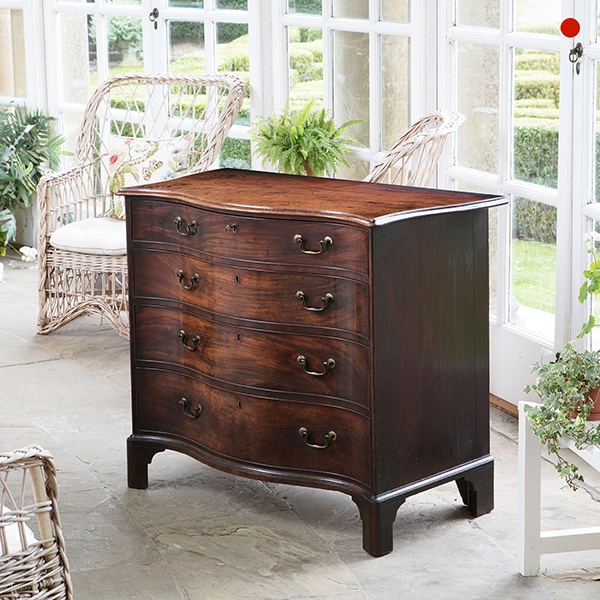
A fine George III mahogany serpentine chest of drawers in the manor of Henry Hill of Marlborough
A fine George III mahogany serpentine chest of drawers in the manner of Henry Hill. With ebonised, ogee moulded serpentine dovetail-housed top.

William and Mary Kingwood or ‘Princes Wood’ Oyster Table Box
William & Mary Kingwood Oyster Table Box or ‘Princes Wood’, Circa 1690. England. Originally designed to store tableware and was given the apt name ‘table box’.
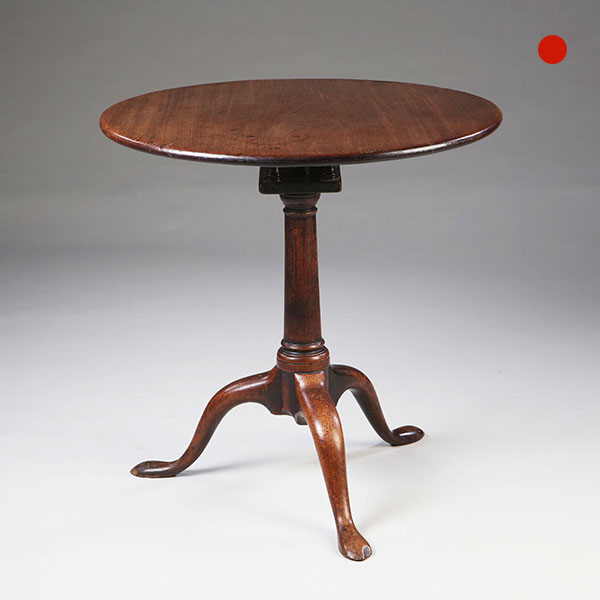
George III Mahogany Tripod or Snap
George III Mahogany Tripod Table or Snap-Top Table with Birdcage circa 1770. England SOLD Follow UsGeorge III Mahogany Tripod or Snap-Top Table with Birdcage, circa 1770. England Of solid mahogany, the gun barrel and one-piece top are raised...
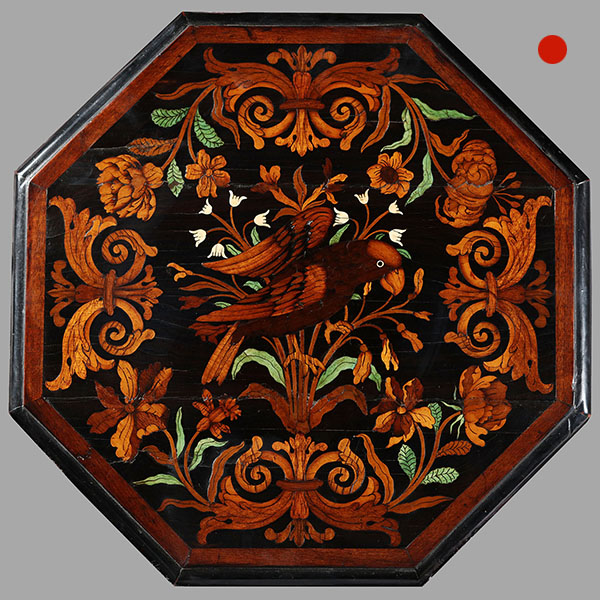
17th-Century Floral Marquetry Candle Stand
17th-Century Floral Marquetry Candle Stand, 1675-1690. The Metropolitan Museum of Art in New York decided to auction a number of pieces of exceptional merit.
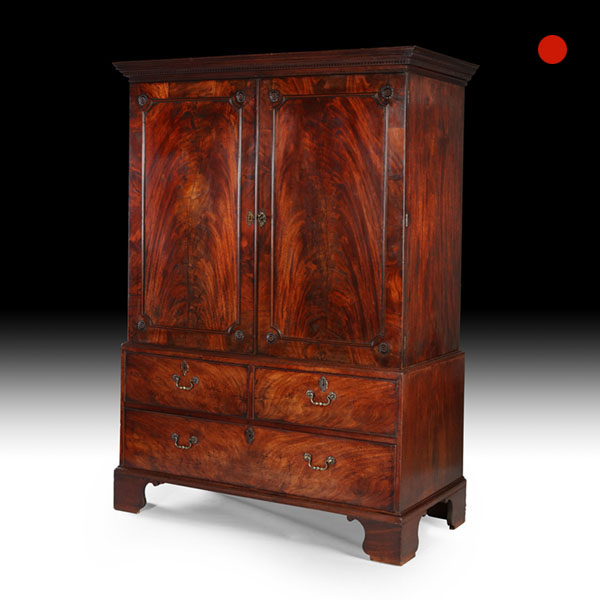
George III Mahogany Linen Press Wardrobe
George III Mahogany Linen Press Wardrobe 1760 England SoldGeorge III Mahogany Linen Press Wardrobe A fine George III mahogany linen press in outstanding original condition. The press was obviously made to exceed with the cabinetmaker using...
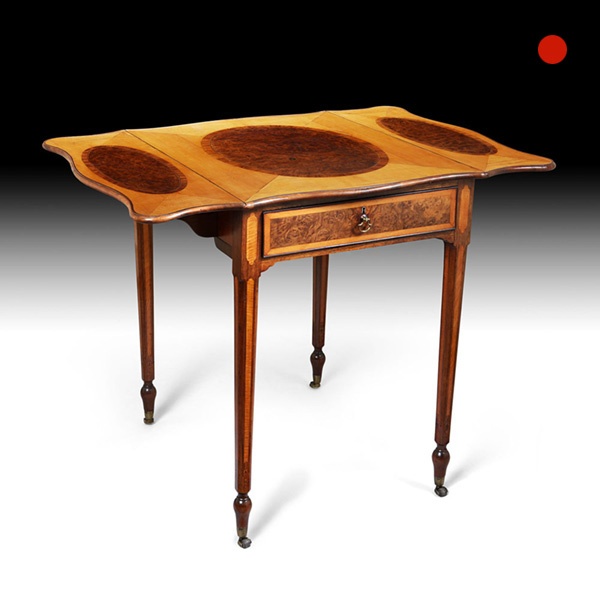
18th Century George III Satinwood and Pollard Oak Pembroke Occasional Table
An exceptionally fine and rare George III satinwood and pollard oak Pembroke table. The padauk top is veneered in satinwood cantered by large ovals of tightly clustered burr pollard oak reserves, bordered in princess wood and lined with fine ebony and box stringing.

A fine George III mahogany serpentine chest of drawers in the manor of Henry Hill of Marlborough
A fine George III mahogany serpentine chest of drawers in the manner of Henry Hill. With ebonised, ogee moulded serpentine dovetail-housed top.

William and Mary Kingwood or ‘Princes Wood’ Oyster Table Box
William & Mary Kingwood Oyster Table Box or ‘Princes Wood’, Circa 1690. England. Originally designed to store tableware and was given the apt name ‘table box’.

George III Mahogany Tripod or Snap
George III Mahogany Tripod Table or Snap-Top Table with Birdcage circa 1770. England SOLD Follow UsGeorge III Mahogany Tripod or Snap-Top Table with Birdcage, circa 1770. England Of solid mahogany, the gun barrel and one-piece top are raised...

17th-Century Floral Marquetry Candle Stand
17th-Century Floral Marquetry Candle Stand, 1675-1690. The Metropolitan Museum of Art in New York decided to auction a number of pieces of exceptional merit.

George III Mahogany Linen Press Wardrobe
George III Mahogany Linen Press Wardrobe 1760 England SoldGeorge III Mahogany Linen Press Wardrobe A fine George III mahogany linen press in outstanding original condition. The press was obviously made to exceed with the cabinetmaker using...

18th Century George III Satinwood and Pollard Oak Pembroke Occasional Table
An exceptionally fine and rare George III satinwood and pollard oak Pembroke table. The padauk top is veneered in satinwood cantered by large ovals of tightly clustered burr pollard oak reserves, bordered in princess wood and lined with fine ebony and box stringing.
YOU MAY ALSO LIKE

Engraved Eight-Day Striking and Repeating Carriage Clock by Perregaux Au Locle
Engraved Eight-Day Striking and Repeating Carriage Clock by Perregaux Au Locle Follow UsEngraved Eight-Day Striking and Repeating Carriage Clock by Perregaux Au Locle The superb engraved gilt gorge brass case has facetted glass panels to all...

Fine George III 18th Century Period Mahogany Longcase Clock by Tomas Fowle
18th Century Period Mahogany Longcase Clock by Tomas Fowle £12,995 Follow Us18th Century Period Mahogany Longcase Clock by Tomas Fowle A fine George III period mahogany longcase clock of excellent colour, patination and proportions, circa...

17th Century Figured Walnut and Seaweed Marquetry Lace Box
17th Century Figured Walnut and Seaweed Marquetry Lace Box £3,600 Follow Us17th Century Figured Walnut and Seaweed Marquetry Lace Box A fine and extremely rare figured walnut and seaweed marquetry 'lace box', circa.... let’s break it down -...

19th Century Repeating Gilt-Brass Carriage Clock by the Famous Drocourt
19th Century Repeating Gilt-Brass Carriage Clock by the Famous Drocourt £5,600 Follow Us19th Century Repeating Gilt-Brass Carriage Clock by the Famous Drocourt A superb repeating carriage clock with a gilt-brass gorge case by the famous maker...

17th-Century Hague Clock Signed by Pieter Visbagh, circa 1675
Small 17th Century Hague clock made c. 1675 by Pieter Visbagh, who was apprenticed by Salomon Coster. The latter made the first pendulum clock according to the instructions of Christiaan Huygens, the internationally renowned scientist who developed the idea of applying a pendulum to a clock movement.

Pair of 18th-Century English Rococo Gilt Bronze Andirons or Firedogs
An exceptional pair of 18th century English Rococo gilt bronze andirons or fire dogs.
The bold shape of these andirons relate to designs of Thomas Johnson (1714–1778), one of London’s pioneers of the ‘Modern’ or French style, later known as Rococo.

Engraved Eight-Day Striking and Repeating Carriage Clock by Perregaux Au Locle
Engraved Eight-Day Striking and Repeating Carriage Clock by Perregaux Au Locle Follow UsEngraved Eight-Day Striking and Repeating Carriage Clock by Perregaux Au Locle The superb engraved gilt gorge brass case has facetted glass panels to all...

Fine George III 18th Century Period Mahogany Longcase Clock by Tomas Fowle
18th Century Period Mahogany Longcase Clock by Tomas Fowle £12,995 Follow Us18th Century Period Mahogany Longcase Clock by Tomas Fowle A fine George III period mahogany longcase clock of excellent colour, patination and proportions, circa...

17th Century Figured Walnut and Seaweed Marquetry Lace Box
17th Century Figured Walnut and Seaweed Marquetry Lace Box £3,600 Follow Us17th Century Figured Walnut and Seaweed Marquetry Lace Box A fine and extremely rare figured walnut and seaweed marquetry 'lace box', circa.... let’s break it down -...

19th Century Repeating Gilt-Brass Carriage Clock by the Famous Drocourt
19th Century Repeating Gilt-Brass Carriage Clock by the Famous Drocourt £5,600 Follow Us19th Century Repeating Gilt-Brass Carriage Clock by the Famous Drocourt A superb repeating carriage clock with a gilt-brass gorge case by the famous maker...

17th-Century Hague Clock Signed by Pieter Visbagh, circa 1675
Small 17th Century Hague clock made c. 1675 by Pieter Visbagh, who was apprenticed by Salomon Coster. The latter made the first pendulum clock according to the instructions of Christiaan Huygens, the internationally renowned scientist who developed the idea of applying a pendulum to a clock movement.

Pair of 18th-Century English Rococo Gilt Bronze Andirons or Firedogs
An exceptional pair of 18th century English Rococo gilt bronze andirons or fire dogs.
The bold shape of these andirons relate to designs of Thomas Johnson (1714–1778), one of London’s pioneers of the ‘Modern’ or French style, later known as Rococo.



